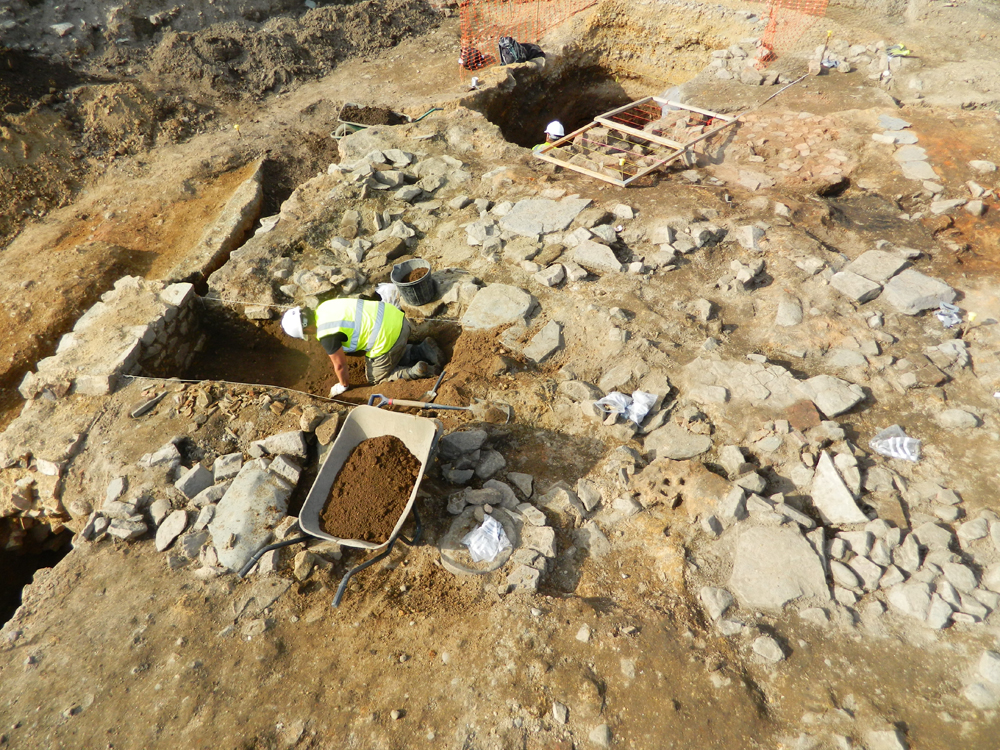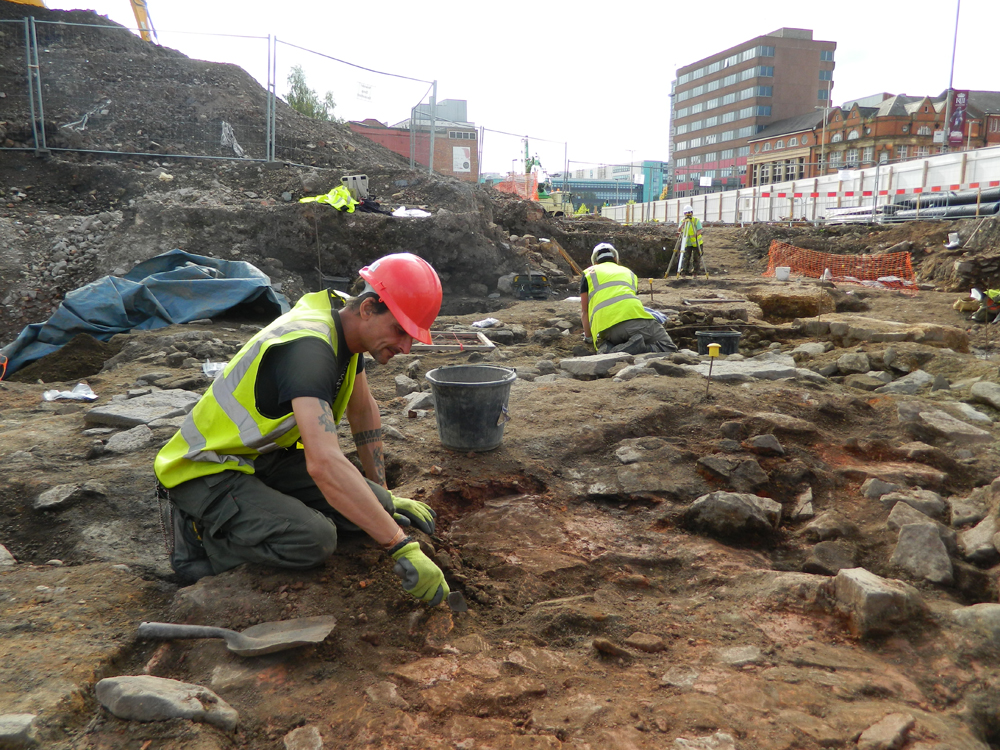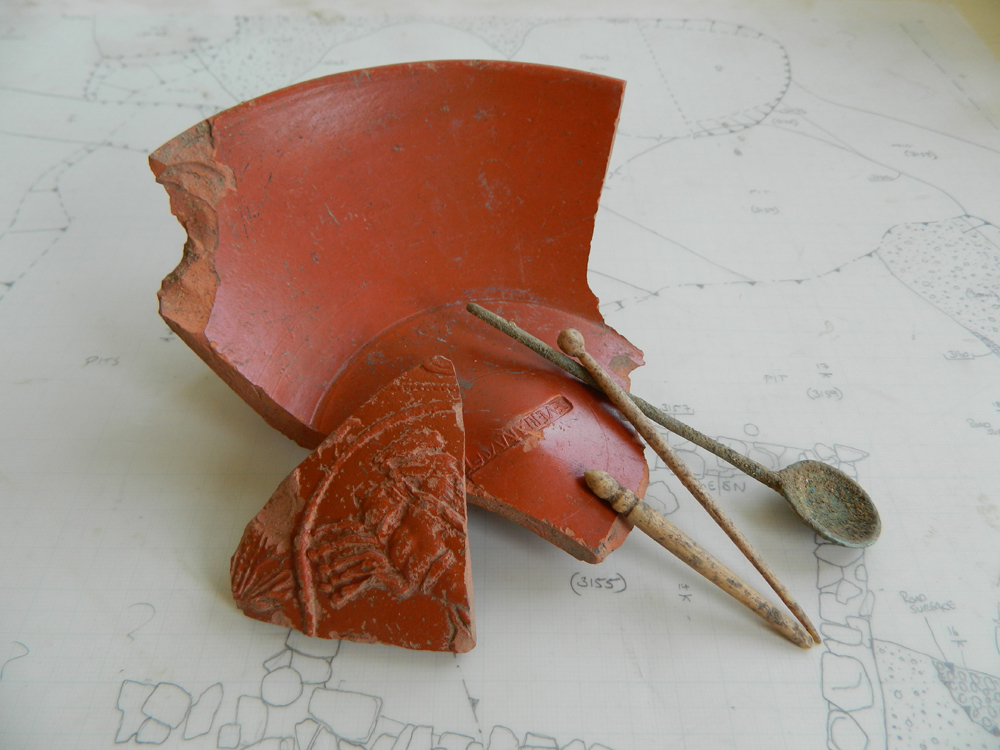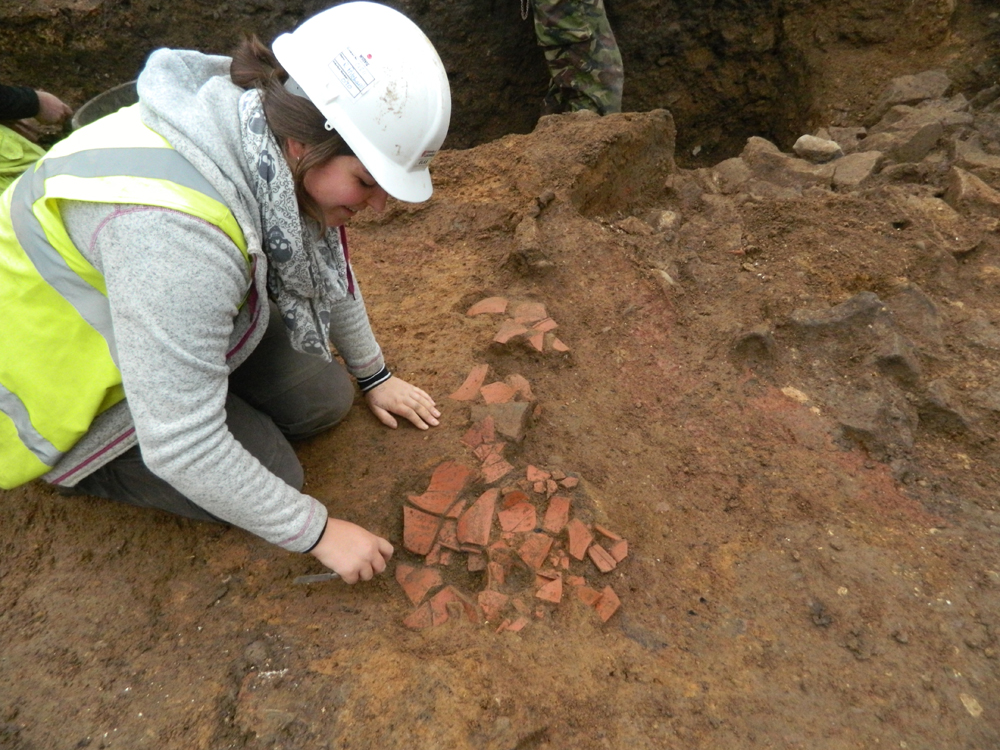Photos: Rubbish Piles & Roman Mosaics Unearthed in Historical English City
Archaeologists recently unearthed a trove of everyday treasures under an old bus depot in Leicester, England. Some of the coins, pottery, jewelry and other items discovered date back to the days of Roman rule in Britain during the second century. Other newly uncovered artifacts are more modern (and a bit more mundane) and include items from the rubbish bins and backyards of medieval townspeople of the 12th through 16th century. These household goods are helping researchers unlock the secrets of a city where, in 2012, archaeologists unearthed the remains of king Richard III, last monarch of the Plantagenet dynasty. [Read the full story about the Leicester discoveries] (Photo credit: University of Leicester)
Large-scale research
Archaeologists from the University of Leicester recently excavated the area under a former bus depot in advance of new construction. There they discovered what they believe are remnants of medieval and post-medieval backyards. Complete with rubbish piles and old garden walls, the artifacts they unearthed tell the story of daily life in what was once the bustling hub of the city.
Long lived history
Beneath the backyard treasures, other artifacts remained intact. Archaeologists also excavated the remains of a late Roman building. Part of a wall can be seen to the left and pieces of stone flooring are visible to the right.
Fragile excavation
The remains of a Roman mosaic pavement are carefully uncovered. When this centuries-old building was demolished, the pavement was broken and collapsed down into one of the empty foundation trenches.
Get the world’s most fascinating discoveries delivered straight to your inbox.
Caretakers of the past
Late Roman industrial features were excavated and recorded by archaeologists before building work begins on the site of a former bus depot.
Wares of the time
Some of the Roman artifacts discovered during the excavation include fine Samian table wares, bone hairpins and a copper spoon.
Going back in time
The archaeologists believe they unearthed an ancient intersection, where two second-century Roman roads once crossed. Arched gravel surfaces cover these roads, and drainage gullies, as well as the remnants of stone and timber buildings, line either side of the ancient thoroughfares.
Broken dishes
Other everyday items, like this high-quality Roman tableware were also uncovered during the dig.
Follow Elizabeth Palermo @techEpalermo. Follow Live Science @livescience, Facebook & Google+. Original article on Live Science.
 Live Science Plus
Live Science Plus












